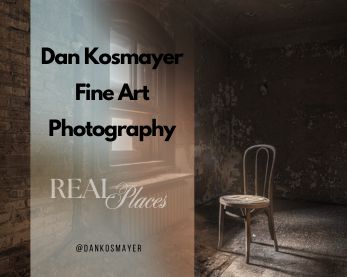How to Add Topaz to Lightroom: A Photographer’s Guide
Adding Topaz to Lightroom has become a crucial part of my post-processing workflow, and it’s easier than you might think. If you’re serious about enhancing your images, you’ll want to get Topaz Photo AI working seamlessly with Lightroom Classic. I’ll guide you through the process, from system requirements to troubleshooting, so you can focus on what you love—making your photos stand out.
System Requirements and Compatibility
Before diving in, ensuring your system can handle Topaz Photo AI is essential. You need a 64-bit operating system—either Windows 10 or macOS High Sierra (or later). Your computer should have at least 8 GB of RAM and 2 GB of VRAM, especially with high-resolution images. Make sure to free up at least 1 GB of disk space.
What I appreciate about Topaz Photo AI is its compatibility with various file formats. Topaz handles them easily if you’re working with RAW, JPEG, or TIFF. You can also manage all your Topaz programs using Topaz Fusion, which streamlines everything into one hub. It’s a great way to keep all your tools organized and readily accessible.
Installing Topaz Photo AI in Lightroom
Let’s get Topaz Photo AI set up in Lightroom Classic. First, download and install the software from the official website. Once it’s installed, here’s what you need to do to enable it:
1. Restart Lightroom: The new Topaz Photo AI plug-in is recognized.
2. Verify Installation: Go to “File” > “Plug-in Extras” and check if Topaz Photo AI is listed.
3. Compatibility Check: Make sure your version of Lightroom Classic is compatible. Keeping Lightroom updated helps avoid issues down the line.
If Topaz Photo AI doesn’t appear after installation, try reinstalling the plug-in or restarting Lightroom again. Sometimes, a simple restart does the trick.
Configuring Topaz as an External Editor
To smooth the workflow, you should configure Topaz Photo AI as an external editor in Lightroom Classic.
1. External Editing Preferences: Navigate to “Lightroom Classic” > “Preferences” > “External Editing.”
2. Add Topaz Photo AI: Click the “Add” button and select Topaz Photo AI from the available options.
3. Set File Format: Choose a file format (I recommend TIFF for best quality) and select a color space like ProPhoto RGB.
4. Save Settings: Hit “OK” to save your external editing preferences.
Once set up, you’ll have the option to either edit the original file or create a new preset. This flexibility lets you keep your original images intact while experimenting with different editing techniques.
Using Topaz Photo AI in Lightroom
Now that everything’s set up, you can edit your images with Topaz Photo AI. Here’s how to do it:
1. Select an Image: Choose from your Lightroom Classic library.
2. Process with Topaz: Go to “File” > “Plug-in Extras” > “Process with Topaz Photo AI.”
3. Choose Settings: Select a preset or manually adjust the settings.
4. Process and Save: Once you’re happy with the edits, click “Process.” The edited file will be saved in the same folder as the original.
One of the great things about using Topaz Photo AI within Lightroom Classic is the ability to create new files without overwriting the original image. This allows for experimentation without worrying about losing your initial edits.
Troubleshooting Topaz Photo AI with Lightroom
While this setup is straightforward, you might need help with a few hiccups. Here’s how to troubleshoot common issues:
1. Plug-in Not Listed: If Topaz Photo AI isn’t listed under “Plug-in Extras,” try reinstalling the plug-in or restarting Lightroom Classic.
2. File Not Saving Correctly: Double-check your file format and color space settings to ensure they’re compatible with Topaz Photo AI.
3. Processing Errors: If you encounter any errors, check the log files in Topaz Photo AI or contact Topaz support for assistance.
You can also consult the Lightroom Classic community for additional tips and support. It’s a helpful resource when you run into unexpected issues.
Final Thoughts on Adding Topaz to Lightroom
Incorporating Topaz Photo AI into your Lightroom Classic workflow can significantly enhance your editing capabilities. Topaz Photo AI offers a powerful toolset to elevate your work, whether focusing on noise reduction, sharpening, or even upscaling images. And with Topaz Fusion, managing multiple Topaz plug-ins becomes much more efficient.
So, the next time you’re working on a photo that needs that extra touch, remember how easy it is to open it in Topaz Photo AI directly from Lightroom Classic. Maximizing the potential of your images is all about maximizing their potential, and this setup makes it easy to do just that. ✔
